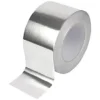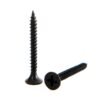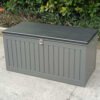The Ultimate Guide to Loft Insulation: Save Money and Energy
Have you ever noticed how your home struggles to stay warm in the winter and cool in the summer? If so, your loft might be the culprit. A poorly insulated loft allows heat to escape, making your home inefficient and costly to maintain. Luckily, loft insulation is an easy and effective solution! In this guide, we’ll cover everything you need to know about loft insulation—why it’s important, how it works, and the benefits it brings to your home and wallet.
Why Is Loft Insulation Important?
Loft insulation acts as a barrier that slows down heat transfer between your home and the outside environment. This means during winter, heat is trapped inside, keeping your living space warm and cozy. In summer, it prevents excessive heat from entering, keeping rooms cooler.
Without insulation, up to 25% of your home’s heat can escape through the roof. That’s a significant amount of wasted energy—and money! Investing in proper loft insulation ensures that your home remains energy efficient all year round.
The Benefits of Loft Insulation
Installing loft insulation is one of the most cost-effective ways to improve your home’s energy efficiency. Here’s why you should consider it:
- Lower Energy Bills: Loft insulation helps retain heat, reducing the need for excessive heating. This translates to lower energy consumption and cheaper utility bills.
- Increased Comfort: No more freezing winters or sweltering summers—your home temperature will be more balanced and comfortable throughout the year.
- Eco-Friendly: Using less energy reduces your carbon footprint, making your home more environmentally friendly.
- Soundproofing Benefits: Insulation adds an extra layer of sound absorption, reducing noise pollution from outside.
- Increases Property Value: A well-insulated home is more attractive to buyers, making it a great investment for the future.
Types of Loft Insulation
Not all loft insulation materials are the same. Choosing the right one can make a big difference. Let’s look at some of the most common types:
- Blanket Insulation: The most common type, made from fiberglass or mineral wool. It comes in rolls and is easy to install.
- Loose-Fill Insulation: Made from lightweight materials like cellulose or recycled wool. It’s great for filling difficult-to-reach areas.
- Sheet Insulation: Used for insulating loft conversions, sheet insulation is more rigid and provides great thermal resistance.
- Spray Foam Insulation: A high-performance option that expands to fill gaps, perfect for homes with complex loft structures.
How Much Loft Insulation Do You Need?
Building regulations in many countries recommend a minimum thickness of 270mm for loft insulation. However, if your insulation is old or has compressed over time, you may need to top it up. The right thickness ensures optimal energy savings while maintaining a comfortable living temperature.
How to Install Loft Insulation
Installing loft insulation can be a DIY project if you opt for materials like blanket insulation. Here’s a simple step-by-step guide:
- Measure Your Loft: Calculate the square footage to determine the amount of insulation needed.
- Choose the Right Material: Consider your budget, insulation needs, and ease of installation.
- Prepare the Loft: Clear out any clutter and wear protective gear, including gloves and a face mask.
- Lay Down the Insulation: Start placing insulation rolls between ceiling joists, making sure there are no gaps.
- Apply a Second Layer: Lay another layer across the joists for extra insulation.
If you’re unsure about doing it yourself or need a more advanced insulation type like spray foam, hiring a professional is a great option.
How Much Can You Save with Loft Insulation?
The savings from loft insulation depend on your home’s size and current insulation condition. On average, a well-insulated loft can save you up to £250 ($300) per year on heating bills. Over time, the installation cost pays for itself through reduced energy consumption.
Common Myths About Loft Insulation
There are many misconceptions about loft insulation. Let’s clear up some of the most common ones:
- Myth #1: Loft Insulation Makes Your House Too Hot in Summer. Proper insulation actually regulates your home’s temperature, keeping it cooler in summer and warmer in winter.
- Myth #2: Insulation Causes Damp Problems. Moisture issues arise due to poor ventilation, not insulation itself. Ensuring proper airflow prevents dampness.
- Myth #3: It’s Too Expensive. While there’s an upfront cost, loft insulation is an investment that quickly pays for itself through energy savings.
How Long Does Loft Insulation Last?
Most loft insulation materials have a lifespan of 40+ years. That means once installed, you won’t have to worry about replacing it anytime soon. However, regular checks are essential to ensure it’s still effective.
Government Grants and Financial Assistance
If cost is a concern, you’ll be happy to know that some governments offer grants and incentives to encourage homeowners to improve their energy efficiency. Many schemes provide partial or full funding for loft insulation, making it an accessible upgrade for households.
Final Thoughts: Is Loft Insulation Worth It?
Absolutely! Loft insulation is one of the simplest, most effective ways to improve your home’s energy efficiency, cut down on utility bills, and make your living space more comfortable. Whether you choose a DIY approach or hire a professional, the long-term benefits far outweigh the initial investment.
So, if you’re looking to warm up your home this winter or reduce the summer heat, loft insulation is a no-brainer. Take the first step today, and enjoy a cozier, more energy-efficient home for years to come!





